
AM_Consoles_2014 (2)
.pdf
THE
BROADCAST • INTERNET AUDIO • MULTIMEDIA • POST PRODUCTION • RECORDING
BUYER’S GUIDE
A S p e c i a l P r o m o t i o n a l P u b l i c a t i o n F r o m I n t e n t M e d i a
i a
Consoles
Guide 2014
Produced By: |
In association with: |
Professional Audio in Production
I N T E R N A T I O N A L E D I T I O N
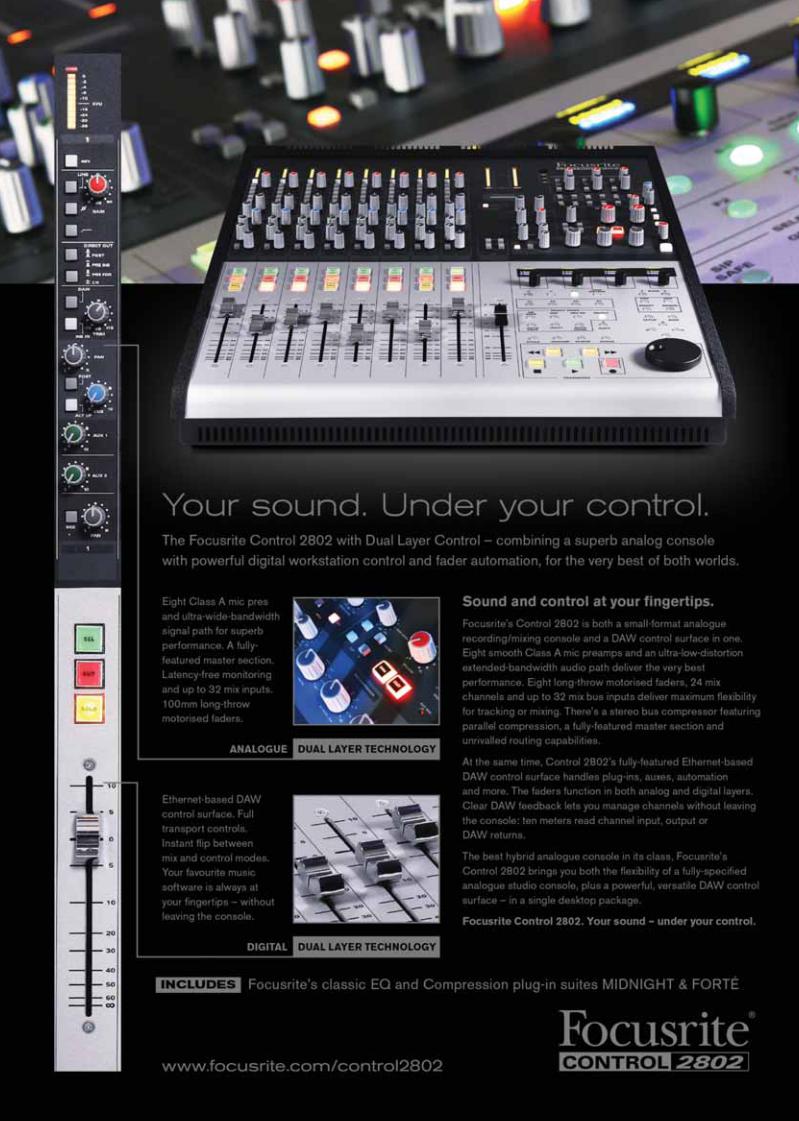
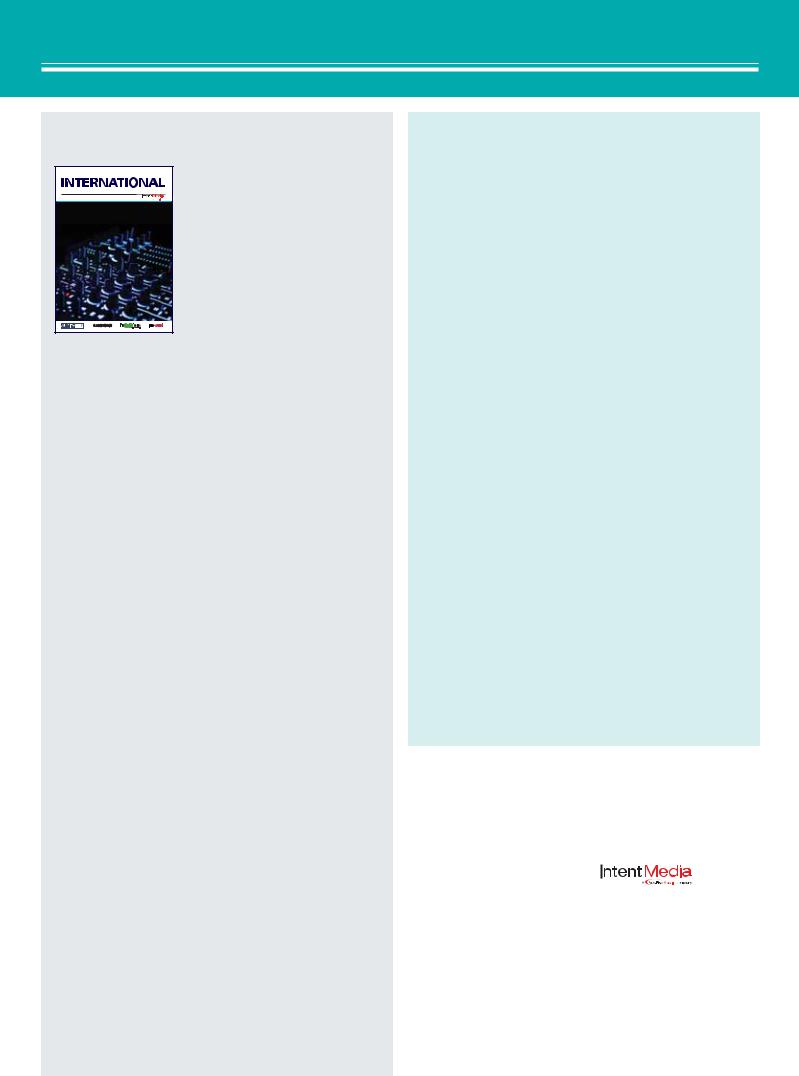
CONTENTS
>>> CONTENTS
THE |
BROADCAST • INTERNET AUDIO • MULTIMEDIA • POST PRODUCTION • RECORDING |
|
BUYER’S GUIDE |
A S p e c i a l P r o m o t i o n a l P u b l i c a t i o n F r o m I n t e n t M e d i a |
|
Consoles |
|
|
Guide 2014 |
Produced By: |
In association with: |
> |
4 |
November Issue 2013
>26
Size Matters DiGiCo
> |
8 |
> |
30 |
|
New Classics |
|
Lawo |
> |
14 |
> |
32 |
|
Allen & Heath |
|
Mandozzi |
> |
16 |
> |
34 |
|
AMS Neve |
|
Presonus |
> |
18 |
> |
36 |
|
Avid |
|
Soundcraft |
> |
20 |
> |
38 |
|
Cadac |
|
Stagetec |
> |
22 |
> |
40 |
|
Calrec |
|
Directory |
> |
24 |
|
|
|
DHD |
|
|
Welcome to the newly updated 2013 Audio Console Guide. At the heart of every great studio or production, be it music, broadcast, live, or post, is a great console and we’re here to help you navigate through the masses of manufacturers and find what’s right for you.
Mixing is an art form and one that is very personal with every engineer having their own unique tricks when it comes to making a performer sound just right. At the core of that process is the almighty console, but what’s right for you and your specific needs? Are you going to go digital or analogue? What sort of networking options do you need? Do you need something specialised for your job, or will a more general board do the trick?
That’s where this magazine comes into play. Within these pages you’ll find information from 12 of the top console manufacturers outlining their latest offering and who, exactly, it’s meant for. Alongside these promotional articles we’ve included a few extra bits to further help you in your console quest. If you’re not in the market for a large console, Paul Watson has done the legwork to give you a rundown of the recent advancements in small-footprint digital consoles. On the other hand, if you can’t picture a studio without a 96-channel desk at its heart, Kevin Hilton dives into the archives and asks those who have spent decades behind a number of boards to help answer the question of ‘what makes a console classic?’
This, and the other Guides in the series (Monitors & Headphones, Microphones, Live, Broadcast Audio, and DAWs & Plug-ins) are produced in conjunction with Audio Media and are designed to help you navigate your way though the information explosion and find the product that suits you.
Audio Media is an internationally distributed magazine that deals with professional audio production in film, TV, radio, music, games, and on stage. It’s available in both print and digital editions. For more details, go to www.audiomedia.com.
Jory MacKay, Audio Media
>>> MEET THE TEAM
>Sales Manager
Graham Kirk graham.kirk@intentmedia.co.uk
>Deputy Editor
Jory MacKay jory.mackay@intentmedia.co.uk
>Head of Design & Production
Adam Butler adam.butler@intentmedia.co.uk
>Production Executive
Jason Dowie jason.dowie@intentmedia.co.uk
>Designer
Jat Garcha jat.garcha@intentmedia.co.uk
AUDIO MEDIA (UK)
Audio Media is published by Intent Media London,
1st Floor, Suncourt House, 18-26 Essex Road, London N1 8LN, England. www.audiomedia.com Telephone: 0207 354 6001
www.nbmedia.com
The contents of this publication are subject to worldwide copyright protection and reproduction in whole or in part, whether mechanical or electronic, is expressly forbidden without the prior written consent of the Publishers. Great care is taken to ensure accuracy in the preparation of this publication but neither NewBay Media nor the Editor can be held responsible for its contents or any omissions. The views expressed are those of the contributors and not necessarily those of the Publishers or Editor.
The Publishers accept no responsibility for the return of unsolicited manuscripts, photographs, or artwork. © 2013 NewBay Media. All rights reserved.
www.audiomedia.com |
November 2013 3 |
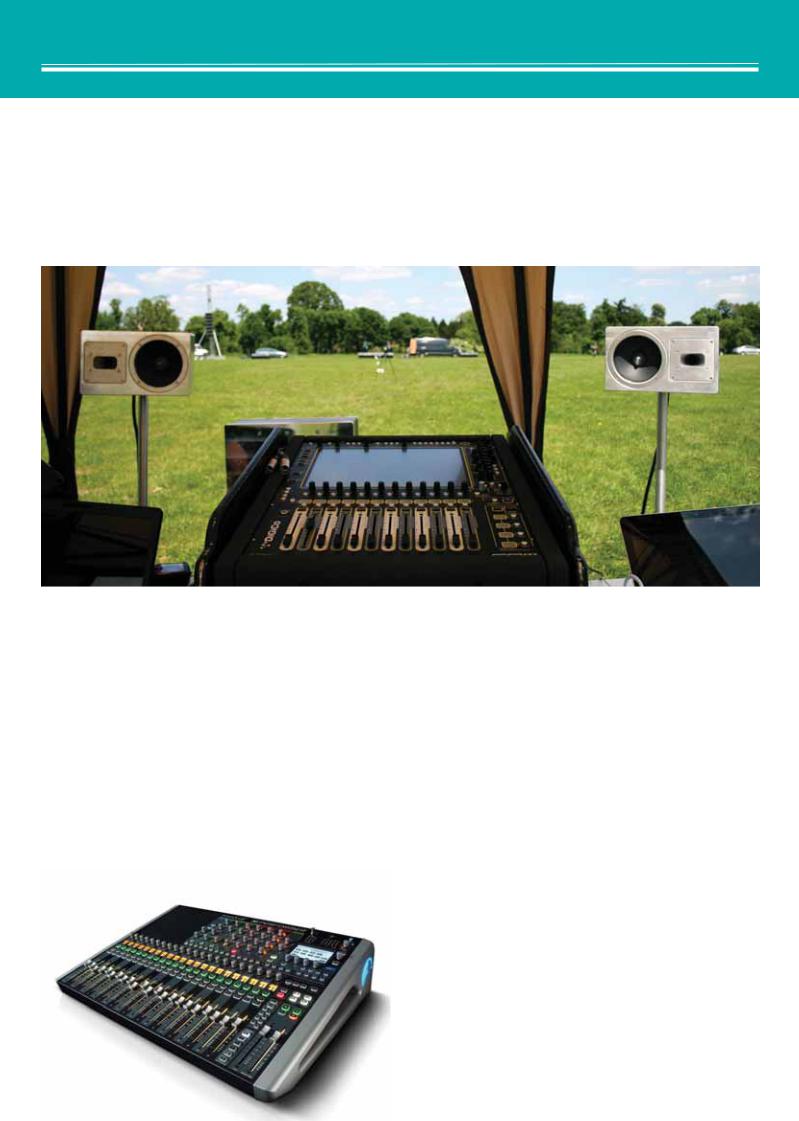
SMALL-FORMAT
All Things EQual?
As small-footprint digital consoles continue to evolve, what's changing under the hood in terms of EQ and dynamics? Paul Watson finds out what users can expect as standard from some of the industry's leading manufacturers...
DiGiCo’s smallest live console, the SD11
DIGICO
DiGiCo’s smallest live console offering is the SD11, a 19-inch rack mount or tabletop mixer which packs plenty of punch thanks to a combination of Stealth Digital Processing and floating point Super
FPGA technology. In addition to standard channel processing, which includes channel delay, single and multi-channel presets, dual insert points, hiand lo-pass filters @ 24dB/octave, and a four-band parametric
EQ with band curve selection, DiGiCo provides DYN 1 (compressor, de-esser, or assignable multi channel compressor) and DYN 2 (gate, compressor or ducker).
Furthermore, the SD11 benefits from four dynamic EQ processors, which are all individually assignable to any input or output channel; these offer dynamic processing to each of the console’s four standard parametric bands, plus there are also four assignable multiband compressors.
The console also has 12 gangable 32-band graphic EQs, four stereo effects (from a palette of 33), and eight control groups (VCAs). In addition, there is an 8 x 8 output matrix, dual solo busses, and a master buss, so users essentially have 39 busses at their disposal.
Harman’s Soundcraft
Si Performer
4 November 2013
SOUNDCRAFT
Being part of the Harman family, Soundcraft’s small-footprint offerings all benefit from Lexicon effects, BSS graphics, Studer signal processing, and dbx dynamic processing.
The Si Expression is the manufacturer’s smallest digital console and comes in three guises: Si Expression 1, a 19-inch rack mount unit (16 faders); Si Expression 2 (24 faders); and Si Expression 3 (32 faders).
The EQ and dynamics feature set is the same for all of the models: a four-band EQ offers low and hi shelf, two bands of parametric EQ with variable Q, and a range of 22Hz to 20KHz to complement the 31 BSS
GEQ processors and hi-pass filters; GEQ LO selects the lower half of the EQ from 31Hz to 630Hz, and GEQ HI caters from 800Hz to
16kHz. There is a GEQ on every aux, matrix, and buss; and 20 aux busses, four FX busses, and eight matrix busses, for a grand total of 35 busses.
The dynamics section has controls for the gate and compressor (on every channel): the compressor controls are threshold, attack, release, make-up gain, and ratio; and gate controls are S/C HPF, S/C LPF, threshold, depth, attack, and release.
There is a gate and compressor on every input, and a compressor on all of the output busses. In addition, four stereo Lexicon effects engines provide more than 20 preset effects. All effects returns are independent of the channel inputs and users are able to adjust all the parameters of the active FX patch.
The dynamics section has controls for the gate and compressor (on every channel): the compressor controls are threshold, attack, release, make-up gain, and ratio; and gate controls are S/C HPF, S/C LPF, threshold, depth, attack, and release. Gate and compressor are on every input, and it’s compressor only for all of the output busses.
The International Guide To Consoles 2013
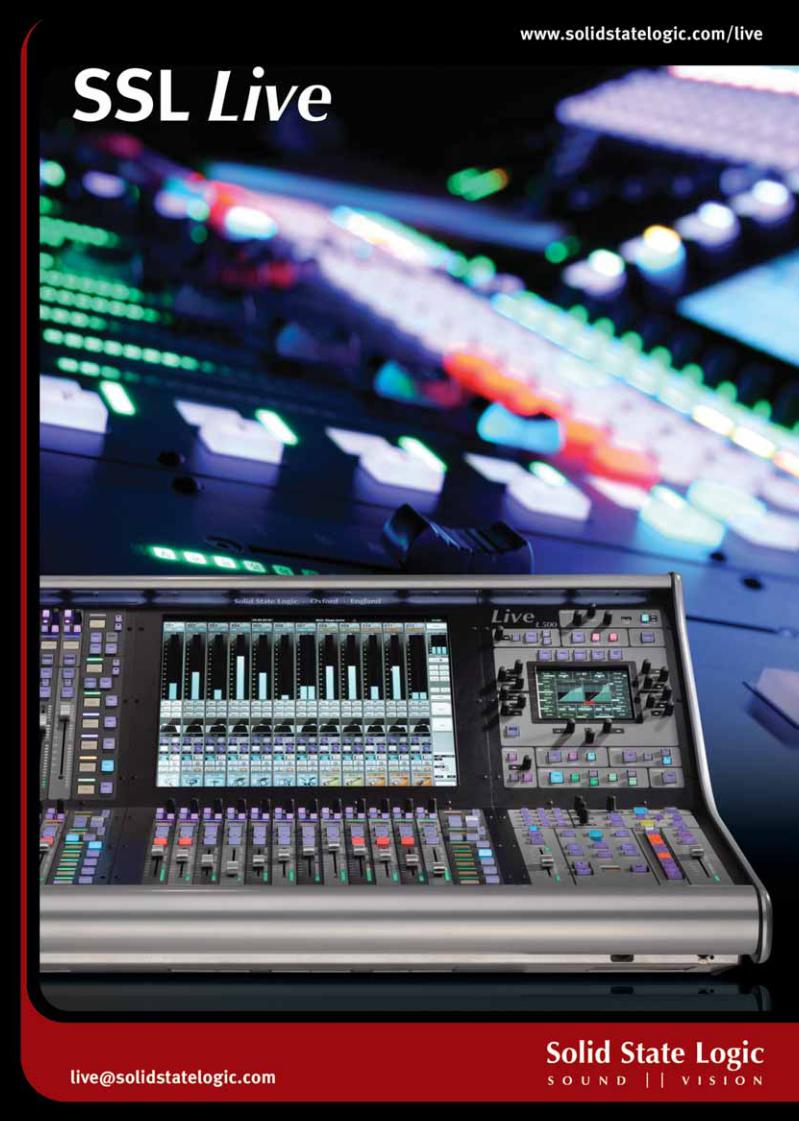
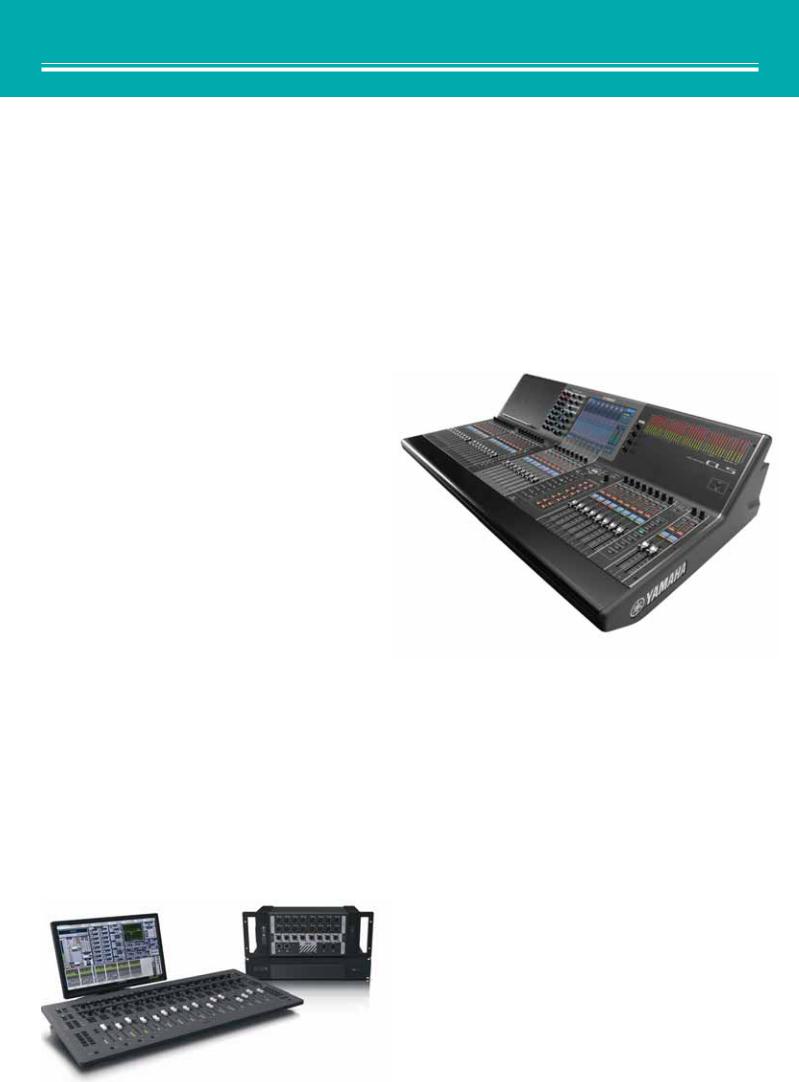
SMALL-FORMAT
MIDAS
The Midas PRO1/PRO1 C is the manufacturer’s smallest-footprint consoles. It has a total of 27 sample-synchronous, phase-coherent mix busses which comprise 16 user-configurable buses (mixes, subgroups, or mix minus groups), and eight matrix busses.
The matrix busses source from inputs as well as groups so can be used as eight additional aux mixes (monitor mix and FX sends) if desired, to provide a total of 24 mixes (plus L, R, and mono) for monitor mixing.
All busses bar the mono one can be linked as stereo pairs.
The PRO1 also benefits from up to 12 multi-channel FX engines, 28
Klark-Teknik DN370 31-band graphic EQs, and eight VCAs.
PRO1 also features eight aux returns, all of which feature four-band Midas parametric EQ and insert points; these returns can be used as returns for the PRO1’s internal FX processors, or as additional mic channels, if sufficient mic inputs are available on the I/O hardware.
BEHRINGER
Behringer’s X32 is a 25-buss digital console with main LCR busses, six matrix busses, and 16 mix busses each featuring inserts, a six-band parametric EQ, and full dynamics processing, along with eight DCA and six mute groups.
Each channel has a compressor and four-band parametric EQ, and the X32 also boasts an on-board Virtual FX rack which features eight true-stereo (16 mono) FX slots; these include delays, choruses, and dynamics as well as high-end simulations such as the Lexicon 480L,
PCM70, and EMT250; and the Quantec QRS. According to the manufacturer, the rack is also capable of running four production-quality, true-stereo reverbs concurrently with eight channels of 31-band graphic equalisation.
ALLEN & HEATH
Allen & Heath’s modular MixRacks form the heart of the manufacturer’s iLive digital mixing system. The iDR10 features a 64 input x 32 mix bus architecture with full processing on all input and mix channels, so you don’t need to allocate or share processing.
The iDR-64 RackExtra module provides enough DSP for all the channel processing to be available all the time, together with eight stereo internal effects devices. Input processing includes hi-pass filter, noise gate, parametric EQ, compressor, limiter/de-esser, and delay. Mix processing includes both parametric and graphic EQ, compressor, limiter, and delay. The module is called RackExtra because it includes
a virtual eight-slot rack, which can be loaded with up to eight additional processors from a library of many emulations of high-quality effects devices. The effects can add an extra eight ‘short returns’ complete with parametric EQ bringing the total number of sources feeding the mix to 72.
The RackExtra includes a DynEQ4 dynamic EQ, which is a model of the industry-standard stereo four-band dynamic equaliser; MultiBD3 multiband compressor; MultiBD4 multiband compressor; SMR Live
(Spatial Modelling Reverberator); 2Tap Delay; Gated Verb; and ADT Doubler.
Avid’s new S3L system
AVID
Avid’s new S3L console boasts 27 busses, eight matrices, and eight
VCAs, plus the capacity for as many AAX plug-ins as one might want to run. There is processing on all outputs and busses – a first for Avid – and the S3L channel strip includes EQ, dynamics, filter, and gain effects.
Standard AAX plug-ins include Dynamics III which features a compressor/limiter, expander/gate, and de-esser; an EQ III which is a high-resolution, double-precision 48-bit EQ; Mod Delay III variable delay processing; the Pultec Bundle analogue EQ simulator of three classic designs; BF-2A, which emulates the LA-2A vintage tube compressor; BF-3A, a levelling amplifier for voice and instruments; the Purple Audio MC77 – a digital replica of the Purple Audio MC77 limiting amplifier; Reel Tape Saturation analogue tape colour, compression and saturation effects; and ReVibe, a high-quality roommodelling reverb.
Yamaha’s CL5
YAMAHA
Each of Yamaha’s new CL Series consoles feature three Virtual Racks of processing: the GEQ rack, the Effect Rack; and the Premium Pac. The Premium Pack features Yamaha’s acclaimed VCM technology, one of the leading features on the CL consoles; there are six varieties of EQ and compressor including two from Rupert Neve Designs: the Portico 5033
EQ and Portico 5043 compressor. Rupert Neve himself worked with Yamaha on these.
Other rack devices are thorough replicas of analogue equipment, even the non-linear stuff like Transformer Performance. The Effect Rack features eight units offering a choice of 46 ambient effects including the popular Rev-X, and in addition, there are eight types of insertion effects such as multiband compression and tape saturation.
Yamaha has tuned many of these new reverbs specifically for live applications so users don’t need to make many tweaks; the GEQ rack contains 16 units of GEQ and if you use Yamaha’s ‘Flex 15’ option, you can have bring that number up to 32 units of GEQ. Furthermore, some of the effects rack can be turned into GEQ if desired.
www.digico.biz
www.soundcraft.com
www.midasconsoles.com
www.behringer.com
www.allen-heath.com
www.avid.com
www.yamahaproaudio.com
6 November 2013 |
The International Guide To Consoles 2013 |
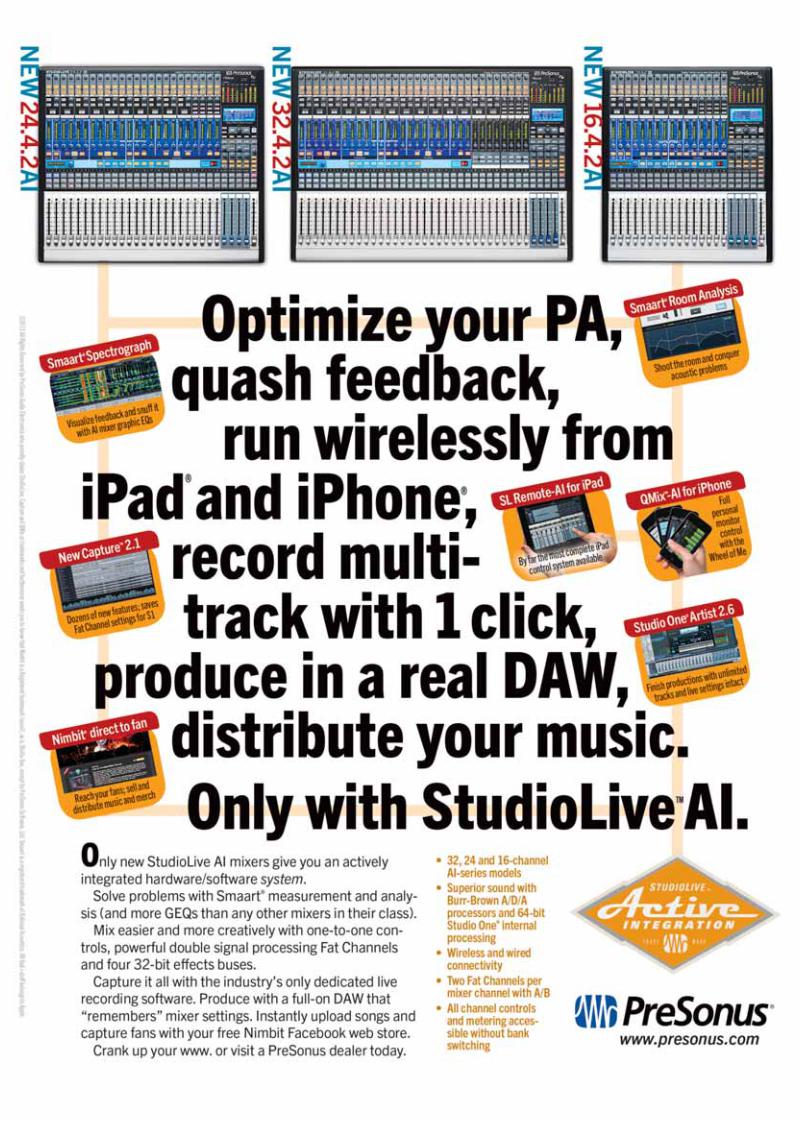
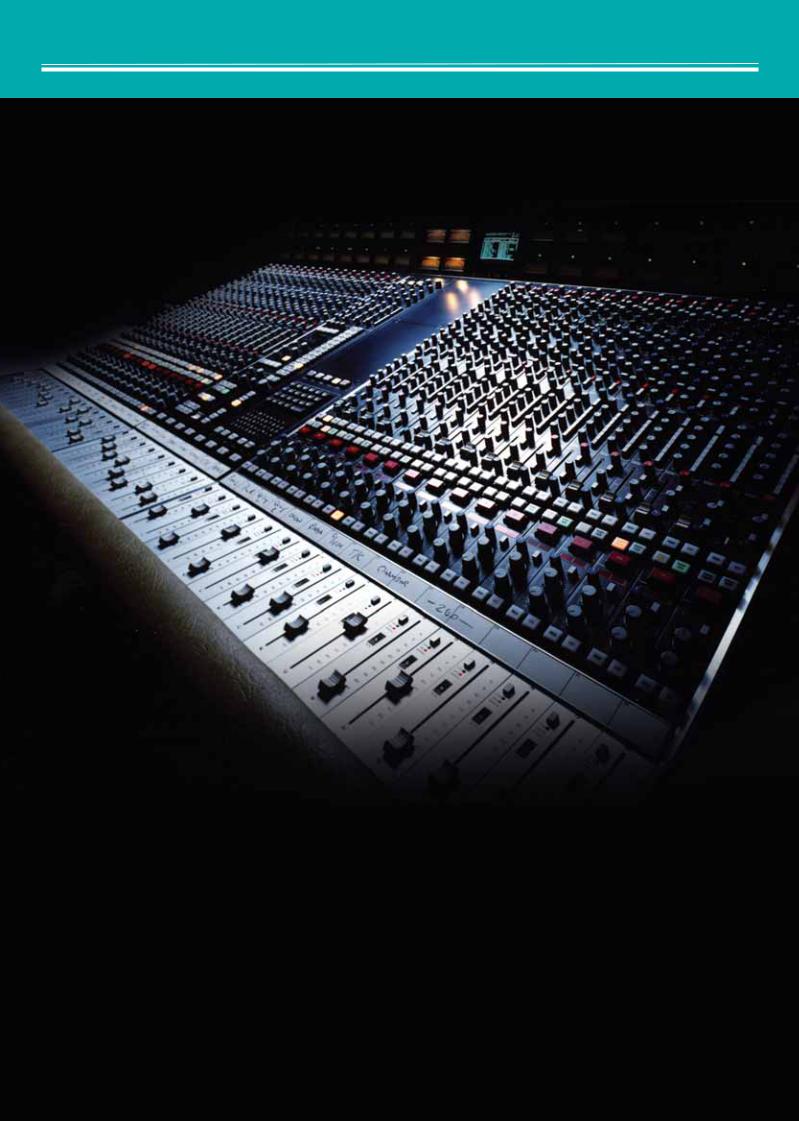
CONSOLE TECHNOLOGY
Future Classics
Often the topic of fierce debate, Kevin Hilton attempts to answer the age-old question of what, exactly, makes a console classic?
The SSL SL 4000E quickly became a standard in the recording industry after its launch in 1981
LIKE LOVE, hate, and genius, classic is an overused word, to the point where it can be almost meaningless. But in the right context it still has some relevance, so that something that has stood the test of time can be described as ‘classic’. This is as true for mixing consoles as it is for cars, but, in both cases – aside from the practical matters of performance and ease of driving – what makes for something that endures can often be hard to quantify.
This nebulous quality is summed up by Tim Summerhayes, who says that during the 1970s he kept hearing people say “Well, there’s just something about it,” when talking about equipment. “It related to new or old outboard equipment, a console, a tape recorder, and even samplers and drum machines,” he explains.
“I think there are few if any classic digital consoles. But in decades yet to come perhaps today’s transparent beast will become tomorrow’s classic. Somehow I doubt it.”
Dennis Weinreich
In the classic car world, marque names that are still producing new cars today – like Jaguar, Ferrari, Alfa Romeo – exist alongside makes that are now only historic examples of past glories: Austin Healy, Jensen, Alvis. The same is true with consoles; SSL, Calrec, AMS Neve,
API, and Midas have all produced classics, as did EMI, Helios (originally made for Olympic Studios), and MCI, which are no longer produced.
Summerhayes ‘grew up’ at RAK Studios in St Johns Wood, London. RAK opened in 1976 and is still going today with its original API desks in Studios 1 and 2. Studio 3 houses a
Neve VRP Legend with Flying Fader automation, while a SSL 4056 E with G series computer is in Studio 4, making the complex a working museum for vintage desks.
Starting out in studio work, Summerhayes says he “learned the trade on API, MCI, Harrison, and, of course, SSL”. He adds that “all were fabulous learning curves and were able to capture the sounds of the time”, making
8 November 2013 |
The International Guide To Consoles 2013 |
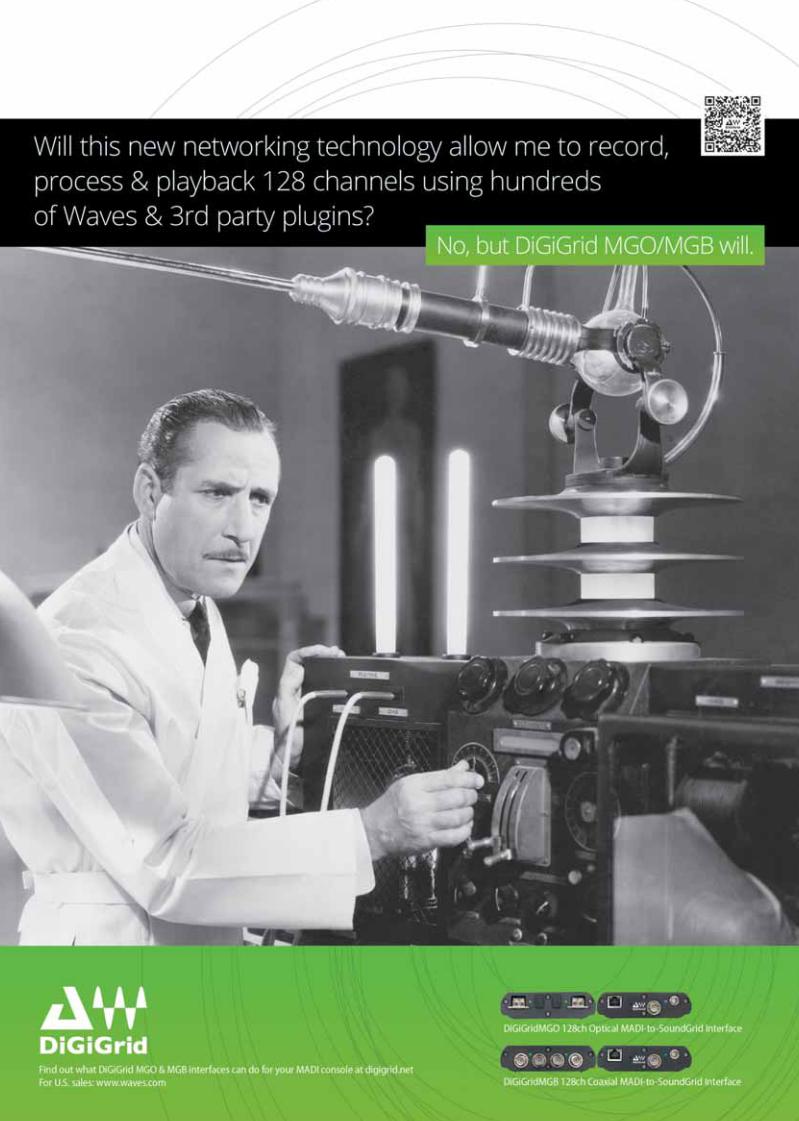
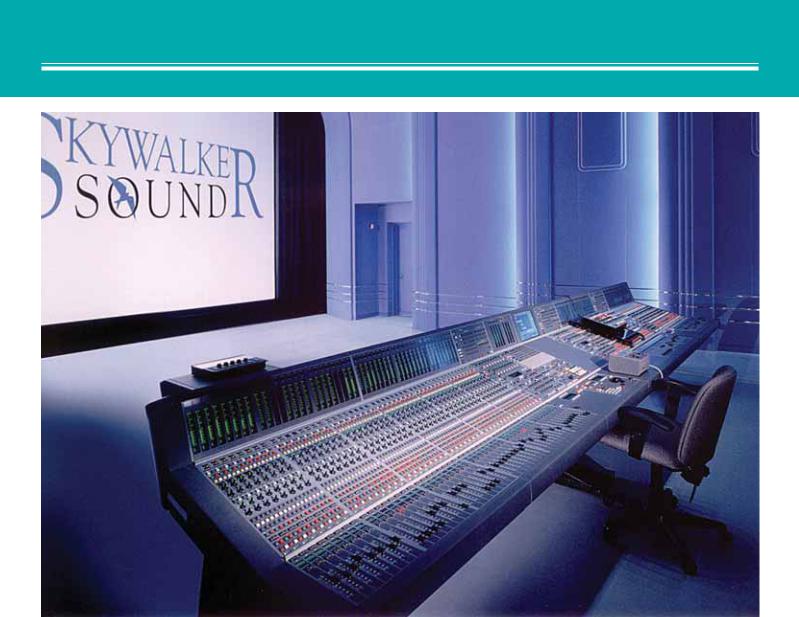
CONSOLE TECHNOLOGY
A ‘classic’ AMS Neve Capricorn installed at Skywalker Sound
them the studio desks of choice particularly during the 1970s and 80s. The ‘of course’ in connection to SSL is a sign of the brand’s ubiquity back then.
SSL is not as revered for its sound quality but is noted for its features and ease of use.
“SSLs are less desirable sonically but are a joy to work on, so are classics because of workflow,” comments Dennis Weinreich, who also began as a music recording engineer before moving into post with his own Videosonics facility and then Pinewood Studios.
A big selling point for SSL was its fader automation. In 1981 the technology that changed the way many people – mostly in the A&R department – thought about music mixing burst on the scene. Total Recall was a computerised way to re-set the faders and EQ on the analogue SL 4000 E according to previous settings. It made SSL desks almost standard in the recording business because
A&R people would call studios asking if they had one. Those that said ‘yes’ went on the list of possibles for sessions.
The thinking seems to have been that computer assisted set-up and mixing made sessions run smoother and more quickly, making for less studio time (which has always been expensive) needing to be booked. Musician and mixer Andy Richards spent a lot
of time in SSL-equipped control rooms during the 1980s playing keyboards for the likes of
Frankie Goes to Hollywood and The Pet Shop
Boys. He says the reality was very different:
“The consoles were very expensive and you could spend two or three days’ studio time resetting the mix, even with the computer.”
Dennis Weinreich observes that a classic console must have something unique about it.
Total Recall, with the Ultimation moving fader system, wasn’t unique – Neve introduced the first moving fader system, Necam (Neve computer assisted mix down), in 1977 – but it captured the imagination.
Another criteria for classic status, according to Weinreich, is “a unique and desirable sound”. Regardless of the size of the console, he says, Neve, Helios, Harrison and MCI desks “sound amazing and are classics sonically”. Neve desks in particular are noted for their excellent sound.
The company came to attention with its 1073 mic preamp, launched in 1970. Three years later it moved into full consoles with the 8048, which featured the 1081 mic preamp and equalizer.
Pondering whether any of today’s digital recording consoles will be regarded in a similar way to the Neves and MCIs of the past, Weinreich says the technology brings more overall compromises sonically. “By virtue of
them being digital that are supposedly transparent,” he says. “But they lack the natural coloration of analogue circuits. I think there are few if any classic digital consoles. But in decades yet to come perhaps today’s transparent beast will become tomorrow’s classic. Somehow I doubt it.”
Tim Summerhayes moved from studio work to mobile recording with Fleetwood Mobiles and now broadcast and event work through Red TX. “When we put Fleetwood together we opted for the new Euphonix CS2000s,” he recalls. “These were digitally controlled analogue desks and were pretty much state of the art. And there was just something about them. At Red TX we have the Studer Vista 8 system, which sounds great. Everyone I know now seems to have a favourite digital console and I firmly believe that the favourite one, and the one that sounds ‘the best’ is the board that the operator knows how to use.”
Another leading practitioner in live music for broadcast and DVD/Blu-ray release is Toby Alington of Richmond Studios. In recent years he has worked on The BRIT Awards and other events using the Floating Earth mobile, which houses a SSL C200. Alington takes up the analogy with classic cars, saying that like them, their console equivalents are “lovely to look at and be nostalgic about but are a pain to
10 November 2013 |
The International Guide To Consoles 2013 |
